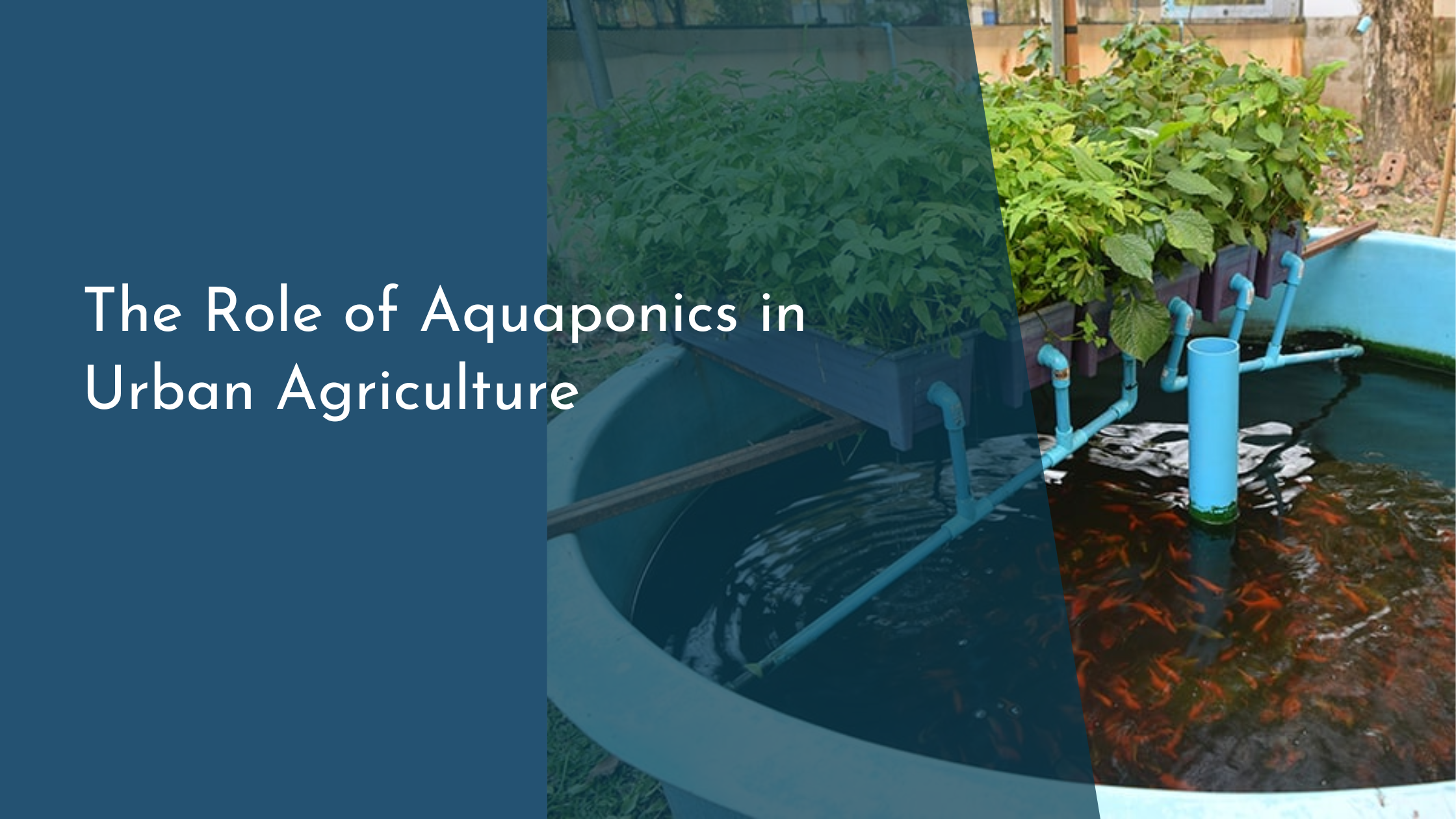The Role of Aquaponics in Urban Agriculture
Urban agriculture is rapidly evolving as cities look for sustainable ways to feed their growing populations. One innovative solution gaining traction is aquaponics, a system that combines aquaculture (raising fish) and hydroponics (growing plants without soil). As urban landscapes continue to expand, aquaponics offers a sustainable, efficient, and community-focused approach to food production. This article explores how aquaponics is being integrated into urban agriculture, its benefits for communities, and what the future holds for this innovative practice in cities around the globe.
Understanding Aquaponics: A Sustainable Solution
Aquaponics is a closed-loop system that leverages the symbiotic relationship between fish and plants to create a sustainable agricultural method. Fish waste provides an organic nutrient source for plants, while plants naturally filter the water, which is then recirculated back to the fish habitat. This integration eliminates the need for chemical fertilizers and significantly reduces water usage compared to traditional farming. The system is highly efficient and can be implemented in various sizes, making it an attractive solution for urban areas where space and resources are limited.
The sustainability of aquaponics lies in its ability to produce both protein (from fish) and vegetables in one interconnected system. This dual production is particularly advantageous in urban settings where access to fresh produce and protein sources can be limited. Moreover, aquaponics systems can be established indoors or on rooftops, allowing for year-round production and reducing the carbon footprint associated with food transportation. With cities striving to become more self-sufficient, aquaponics emerges as a forward-thinking approach to address urban food security challenges.
Integrating Aquaponics into Urban Landscapes
Integrating aquaponics into urban landscapes requires strategic planning and innovative design. Urban planners and architects are increasingly incorporating these systems into new building designs, transforming rooftops and vacant lots into productive agricultural spaces. By utilizing vertical farming techniques, aquaponics systems can maximize limited urban space, providing a lush green aesthetic to city environments while producing food. This integration not only contributes to urban food production but also enhances biodiversity and improves air quality.
Community involvement is essential for the successful integration of aquaponics in urban areas. Local governments, schools, and community organizations can collaborate to establish and maintain aquaponic systems, turning them into educational hubs and community gathering spaces. Workshops and training programs can educate residents on sustainable farming practices, empowering them to take an active role in the local food system. By fostering a sense of community ownership and pride, aquaponics becomes a catalyst for social interaction and environmental stewardship in urban settings.
Benefits of Urban Aquaponics for Communities
Urban aquaponics systems offer a plethora of benefits for local communities, starting with increased access to fresh, locally-produced food. In many cities, inhabitants face “food deserts,” areas where access to healthy and affordable food is limited. Aquaponics can help mitigate this issue by providing a reliable source of fresh produce and fish directly within urban neighborhoods, contributing to improved nutrition and health outcomes for residents.
Beyond food production, aquaponics systems serve as powerful educational tools, offering hands-on learning opportunities for students and community members. These systems can teach valuable lessons about biology, ecology, and sustainability, fostering increased environmental awareness and responsibility. Additionally, they can empower individuals and communities by providing new skills and potential economic opportunities, such as local produce markets and community-supported agriculture (CSA) schemes. With these multifaceted benefits, aquaponics systems can significantly enhance the quality of life in urban areas.
Embracing Aquaponics: A Bright Future for Cities
As cities continue to grow, embracing innovative agricultural practices like aquaponics is essential for sustainable urban development. The adaptability and resource efficiency of aquaponic systems make them well-suited for the urban environment, offering a viable solution for meeting the food demands of densely populated areas. By investing in aquaponics, cities can reduce their ecological footprint, promote local food production, and enhance community resilience against environmental challenges.
Looking to the future, advancements in technology and design are expected to further boost the efficiency and accessibility of aquaponics systems. As more cities recognize the benefits of this integrated farming approach, aquaponics may become a standard feature in urban agriculture, transforming cityscapes into productive and sustainable ecosystems. With a focus on innovation, collaboration, and sustainability, the future of urban agriculture looks bright, and aquaponics is poised to play a central role in this exciting transformation.
The role of aquaponics in urban agriculture is both promising and transformative. By addressing food security challenges, promoting sustainability, and fostering community engagement, aquaponics stands as a beacon of innovation in the quest for a greener, more self-sufficient urban future. As cities continue to embrace this integrated system, they pave the way for healthier communities and a more sustainable planet.


